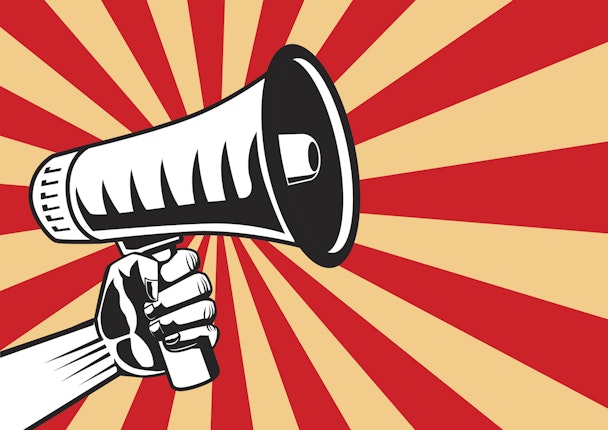Why a calamitous 2020 will spark a design revolution
History has shown that some of the brightest moments in design have come after the darkest of days. Here are five trends that are likely to inspire brand look and feel in the near future and beyond.

As we pass the halfway point of 2020, it’s fair to say that this year has been something of a dumpster fire. From a global pandemic to worldwide protests for racial equality, we’ve experienced large-scale societal events that have turned conventional ways of thinking on their head. And we’ve still got five months to go.
For the design community, there’s a small silver lining to all of this. History shows that design has always been affected—for the better—by upheaval.
We are an optimistic species deep down, hardwired to believe that tomorrow will be better than today, and this is reflected in modern art and design movements. Modernism and Art Deco were a reaction to the horrors of the First World War. Surrealism was born from the Great Depression. Swiss Design followed World War II. And Psychedelia was response to the Vietnam War. For every calamity we’ve faced as a society, a new wave of artists and designers has emerged in response.
So, what’s next? Here are five ways we can expect to see design evolve as a result of the difficult year we’re living through:
1. Bolder and brighter colors are coming
Our quarantined lives have become rather dull and monotonous. Now we are already seeing bolder, brighter design loaded with optimism and positivity emerging in an effort to raise people’s spirits. This will include hyper-real, indulgent colors at one end of the spectrum and natural tones like Chestnut, Honey and Olive Green at the other—in response to all the time we’ve been spending indoors. As Pantone's color expert says, “Now is not the time for grays.”

2. Global design fusion will happen frequently
With location becoming less important due to remote working, design-led businesses will widen the aperture of where they source talent and embrace the fusion of styles that comes from a globally dispersed team. Imagine Korean beauty design sensibility applied to legacy European brands, or a New Zealand sustainability lens applied to fast-food chains. The result will be a mix of styles that will deliver more eye-catching, distinctive work. Just look at how traditional beauty brands like Garnier and La Mer have adopted K-beauty trends and offer sheet masks and gel creams.
3. Old favorites will come back in style
When people ask, “when will things get back to normal?” they are really seeking the reassurance that comes from familiarity. Expect to see more brands look back to look forward. For example, Herbal Essences brought back their old bottles, for example, while Nintendo resurrected its Super NES controllers. There’s also value in returning to classic design aesthetics for new product development. We’ve recently seen fashion brands bring back ‘90s classics, and tie-dye is making a comeback. Expect to see a similar embrace of the past in consumer-packaged goods packaging and even automotive design. Classic origin stories will be something for marketers to embrace once again.

4. Direct to (older) consumer design will take hold
Touted as the future of retail for years now, direct-to-consumer brands have spawned their own design style created for a younger shopper. Millennial pink and a circular font anyone? Most D2C companies are still more obscure than their established competitors. These brands will evolve their aesthetic to better target older consumers who have embraced online shopping in lockdown. We can expect to see a new design language emerge that is more sophisticated as a result. Beauty start-up Better Not Younger, embraces this more refined sensibility eschewing circular fonts and illustrations for high end photography with beautiful lighting and highly curated art direction. Expect others to follow.

5. The circular economy will take center stage
The sustainability movement has been building for years, and now we’ll see design become more concerned with the full life cycle of products. There will be greater focus on reducing harmful extraction of raw materials at one end and waste at the other. Consumers will increasingly expect brands to develop sustainable products, in the vein of the 100% recyclable shoe launched by Adidas. More and more companies will be forced to look at their supply chain and be more transparent about the waste they create. Then their designers will find creative solutions to help remove waste from the system.

“Black Swan” events like what we’re living through this year tend to have unanticipated consequences that are difficult to predict ahead of time—and leave marks that may take a generation or more to fully understand. When we look back with time, it is likely that a new generation of design will have emerged post-2020.
Rather than dwell on the present, it’s time to work toward the version of the future that we want to see, even if we can’t yet clearly envision what form it will take.
Matt Kandela is CEO of branding and experience design company Dear Future
To keep up with all our dedicated US coverage, sign up for the free daily briefing newsletter.
